Scylla And Charybdis – Legendary Greek Sea Monsters – Choosing The Lesser Of Two Evils
A. Sutherland - AncientPages.com - Ancient Greek mythology included gods, beautiful goddesses, gorgeous nymphs, and monsters. Legends and myths about these monsters accompanied seamen and other travelers, making their journeys even more hazardous.
At the shores of the lake of Lerna in the Argolid sowed the fear of Hydra, a sea serpent monster, which in place of each severed head, grew two new ones only. Hercules managed to exterminate it.
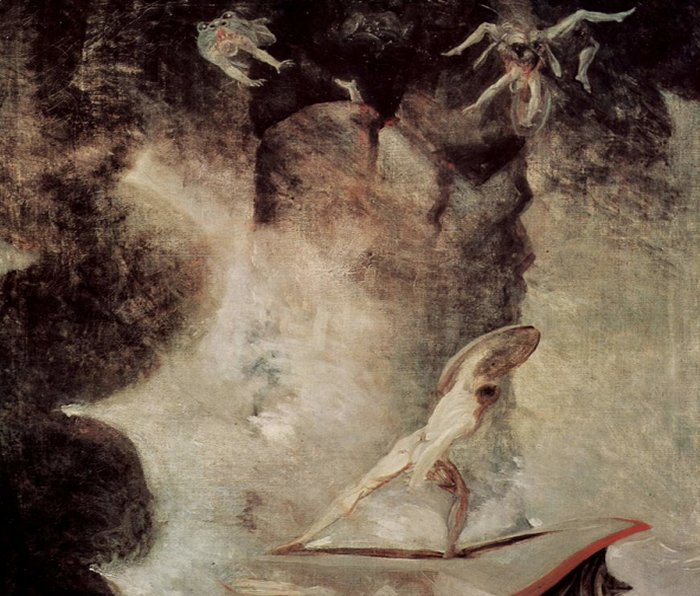 Odysseus in front of Scylla and Charybdis. source
Odysseus in front of Scylla and Charybdis. source
Among other terrible creatures were 'stymphalian birds,' terrible maidens with birds' feet, beaks, and wings of iron. While shape-shifting into sirens, they lured people into the swamps. Their droppings were poisonous, and sharp iron feathers could quickly kill and wound people and herds whenever they wished.
Natural phenomena were not understood by ancient people, who often interpreted events as the work of supernatural forces.
Two immortal monsters - Scylla and Charybdis - lived in the Strait of Messina's narrow waters, a passage between Sicily and the Italian peninsula, and tormented seamen and other travelers from the passing by ships.
The two appear in Homer's Odyssey, and Charybdis is the personification of the sea vortex. She is depicted as a sea deity who dwells in a strait under a rock within a short distance from Scylla's rocky home. In Greek mythology, both were considered navigational hazards close to each other, so they posed a serious threat to passing sailors.
Before she became a monster, Charybdis - a daughter of Zeus and Gaia - was famous for her greed and excess eating. As punishment, she was struck down by thunder into the sea by her father Zeus, and there, she transformed into a monster absorbing and then spitting out masses of seawater along with ships.
The monster was cruel by creating a deadly vortex that entrapped the ships. Most sailors, however, knew how to avoid Charybdis' whirlpool at all costs. The too-close approach could only result in destruction and tragedy.
Charybdis created a terrible vortex that entrapped the ships, and few could escape the furious Charybdis. Three times a day, the whirlpool sucked in everything in the waters surrounding it. Then three times a day, the vortex spewed out vast amounts of seawater and objects it had consumed earlier.
Odysseus once eluded her, slipping between her fury and Scylla, the other monster lurking opposite. However, the beast caught him on the way back. By holding to a fig tree branch growing on a rock protruding from the sea, Odysseus managed to save his life, but it was not easy.
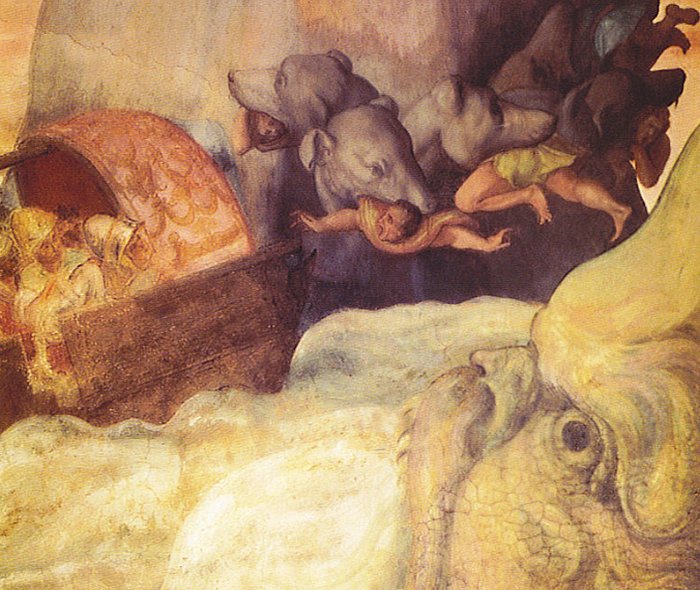 Painting of Odysseus's boat passing between the six-headed monster Scylla and the whirlpool Charybdis. Scylla has plucked five of Odysseus's men from the boat. The painting is an Italian fresco. source
Painting of Odysseus's boat passing between the six-headed monster Scylla and the whirlpool Charybdis. Scylla has plucked five of Odysseus's men from the boat. The painting is an Italian fresco. source
And when Charybdis returned spewing out the remains of the ship - a piece of the shattered mast - Odysseus seized it, and with its help, the sea safely carried him away from the monster.
Scylla Wasn't Born As An Ugly Monster
Unlike other terrible monsters, she began her life as a beautiful sea nymph, happy and carefree. Scylla enjoyed the company of the other sea nymphs, but she did not share their enthusiasm for men and lovemaking. Scylla rejected all suitors and was happy as she was.
One day, however, something happened in her life and dramatically changed her existence.
The beautiful sea nymph caught the attention of Glaucus, a sea deity who fell in love with her. He knew she disliked men, and he also knew he would desperately need the help of magic to change her mind about him. He went to Circe, a daughter of Helios and the Oceanid nymph, Perse, or the goddess Hecate.
Circe was a wicked enchantress with powers of mind control and vast knowledge of potions and herbs, but she used her powers for evil. Glaucus believed she could help him, so he asked Circe to give him magical herbs to conquer Scylla and make her fall in love with him. Circe would never allow him as she fell in love with him instead.
Without any chance to win Glaucus' love, Circe poisoned the pool where Scylla bathed out of jealousy, transforming her into a terrible monster with twelve feet and six heads.
According to the Roman poet Ovid, her belly was covered with heads of barking dogs similar in appearance to Cerberus.
Choosing The Lesser Of Two Evils - A Good Old Advice
"Being between Scylla and Charybdis" is an ancient proverbial advice that has its origin in Greek mythology. It suggests "choosing the lesser of two evils."
People also say that someone finds themselves in a situation where every solution is equally critical or dangerous. It means he caught between a hammer and an anvil and couldn't get out of it. Not everything is only a legend. A whirlpool (Charybdis) does exist there.
It is located in the Strait of Messina, off the coast of Sicily, opposite a rock on the mainland identified with Scylla. The phenomenon is caused by currents meeting, but today, it can be only dangerous to small craft in extreme conditions.
Written by – A. Sutherland - AncientPages.com Senior Staff Writer
Updated on January 22, 2023
Copyright © AncientPages.com All rights reserved. This material may not be published, broadcast, rewritten or redistributed in whole or part without the express written permission of AncientPages.com
Expand for referencesReferences:
Homer, The Odyssey
Gregory Zorzos, Scylla And Charybdis: Ancient Greek History
More From Ancient Pages
-
 Bizarre Sandstone Towers Of The Rocky Town And Legend Of Jan Svatos Who Mastered Magic
Featured Stories | Sep 8, 2018
Bizarre Sandstone Towers Of The Rocky Town And Legend Of Jan Svatos Who Mastered Magic
Featured Stories | Sep 8, 2018 -
 Chogha Zanbil: Huge Ancient Still Existing Ziggurat Dedicated To God Inshushinak
Featured Stories | Mar 10, 2016
Chogha Zanbil: Huge Ancient Still Existing Ziggurat Dedicated To God Inshushinak
Featured Stories | Mar 10, 2016 -
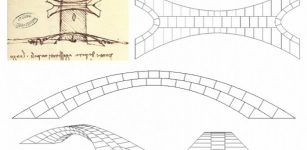 Leonardo da Vinci’s 280-Meter Long Bridge Design – Tested
Archaeology | Oct 17, 2019
Leonardo da Vinci’s 280-Meter Long Bridge Design – Tested
Archaeology | Oct 17, 2019 -
 Leprechaun: One Of The Most Famous And Powerful Creatures Of The Irish Faerie Folk
Celtic Mythology | May 8, 2016
Leprechaun: One Of The Most Famous And Powerful Creatures Of The Irish Faerie Folk
Celtic Mythology | May 8, 2016 -
 Mysterious 9,000-Year-Old Shaman Burial In Bad Dürrenberg – One Of Central Europe’s Most Spectacular Archaeological Discoveries
Featured Stories | Sep 15, 2023
Mysterious 9,000-Year-Old Shaman Burial In Bad Dürrenberg – One Of Central Europe’s Most Spectacular Archaeological Discoveries
Featured Stories | Sep 15, 2023 -
 Knights Templar’s Mysterious Underground Chambers Hidden In The Caynton Caves Discovered
Archaeology | Apr 13, 2021
Knights Templar’s Mysterious Underground Chambers Hidden In The Caynton Caves Discovered
Archaeology | Apr 13, 2021 -
 Tarascan Indians: Intriguing Pre-Columbian Civilization Of Artists, Warriors And Skilled Metallurgists
Civilizations | Sep 9, 2021
Tarascan Indians: Intriguing Pre-Columbian Civilization Of Artists, Warriors And Skilled Metallurgists
Civilizations | Sep 9, 2021 -
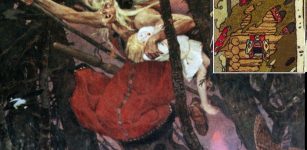 Baba Yaga: Enigmatic, Powerful Archetypal Witch In Slavic Folklore
Slavic Mythology | May 16, 2016
Baba Yaga: Enigmatic, Powerful Archetypal Witch In Slavic Folklore
Slavic Mythology | May 16, 2016 -
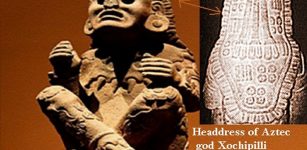 Xochipilli: Aztec God Of Love, Music, Song And Ecstatic Mushroom Trance
Aztec Mythology | May 19, 2018
Xochipilli: Aztec God Of Love, Music, Song And Ecstatic Mushroom Trance
Aztec Mythology | May 19, 2018 -
 Why Did Ancient Romans Cut Off Their Thumbs?
Ancient History Facts | Mar 2, 2020
Why Did Ancient Romans Cut Off Their Thumbs?
Ancient History Facts | Mar 2, 2020 -
 73 Intriguing Burial Bundles And Carved Masks Placed On False Heads Discovered In Peru
Archaeology | Nov 30, 2023
73 Intriguing Burial Bundles And Carved Masks Placed On False Heads Discovered In Peru
Archaeology | Nov 30, 2023 -
 Unusual Rock With Ancient Paintings Discovered By Hiker In Norway
Archaeology | Jun 23, 2023
Unusual Rock With Ancient Paintings Discovered By Hiker In Norway
Archaeology | Jun 23, 2023 -
 On This Day In History: Ensisheim Meteorite Fell To Earth – On Nov 7, 1492
News | Nov 7, 2016
On This Day In History: Ensisheim Meteorite Fell To Earth – On Nov 7, 1492
News | Nov 7, 2016 -
 Rare Discovery Of More Than 18,000 Inscribed Pot Sherds Document Life In Ancient Egypt
Archaeology | Jan 31, 2022
Rare Discovery Of More Than 18,000 Inscribed Pot Sherds Document Life In Ancient Egypt
Archaeology | Jan 31, 2022 -
 Unsolved Ancient Mystery Of Lost Pre-Olmec Civilization – Evidence Of Advanced Scientific Knowledge That Could Re-Write History
Civilizations | Jul 16, 2018
Unsolved Ancient Mystery Of Lost Pre-Olmec Civilization – Evidence Of Advanced Scientific Knowledge That Could Re-Write History
Civilizations | Jul 16, 2018 -
 Remains Of Medieval Port Discovered In Eindhoven
Archaeology | Nov 17, 2020
Remains Of Medieval Port Discovered In Eindhoven
Archaeology | Nov 17, 2020 -
 Ancient City Of Gordium, Gordian Knot And Skeleton In Tumulus Of King Midas
Civilizations | Sep 20, 2018
Ancient City Of Gordium, Gordian Knot And Skeleton In Tumulus Of King Midas
Civilizations | Sep 20, 2018 -
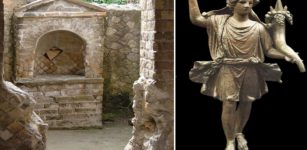 Lares: Roman Household Gods That Protected Home And Family
Ancient Traditions And Customs | Dec 14, 2020
Lares: Roman Household Gods That Protected Home And Family
Ancient Traditions And Customs | Dec 14, 2020 -
 Mysterious Enormous Underground Labyrinth Of Egypt Holds Secrets Kept From The Outside World
Featured Stories | May 29, 2014
Mysterious Enormous Underground Labyrinth Of Egypt Holds Secrets Kept From The Outside World
Featured Stories | May 29, 2014 -
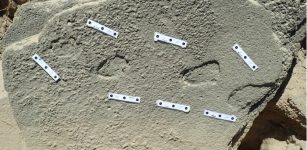 Ancient Footprints Offer Evidence Humans Wore Shoes 150,000 Years Ago – Scientists Say
Archaeology | Sep 11, 2023
Ancient Footprints Offer Evidence Humans Wore Shoes 150,000 Years Ago – Scientists Say
Archaeology | Sep 11, 2023
